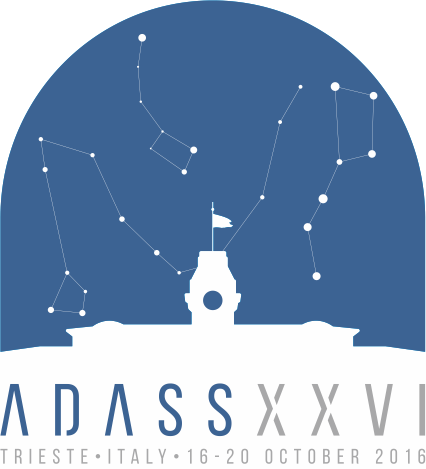Piqueras Laure
Contact
- Position:
- Centre de Recherche Astrophysique de Lyon
- Address
- France
Miscellaneous Information
- Miscellaneous Information
-
Abstract Reference: 30268
Identifier: P6.21
Presentation: Poster presentation
Key Theme: 6 Python in AstronomyMPDAF - A Python package for the analysis of VLT/MUSE data
Authors:
Piqueras Laure, Conseil Simon, Shepherd Martin, Roland Bacon, Richard JohanMUSE (Multi Unit Spectroscopic Explorer) is an integral-field spectrograph mounted on the Very Large Telescope (VLT) in Chile and made available to the European community since October 2014. The Centre de Recherche Astrophysique de Lyon has developed a dedicated software to help MUSE users analyze reduced data. In this paper we introduce MPDAF, the MUSE Python Data Analysis Framework, based on some well-known Python libraries (Numpy, Scipy, Matplotlib, Astropy) which offers new objects to manipulate MUSE-specific data. We will present different usages exhibiting how this Python module may be very useful for the MUSE analysis:
- MPDAF provides a way to load a MUSE cube created by the MUSE pipeline (i.e. a FITS data cube of 3GB, ~ 300x300x3680 pixels) into a Python object handling the world coordinates, the variance and the bad pixels information. It is then relatively easy to extract smaller cubes or narrow-band images from a cube, spectra from an aperture, and perform common operations like masking, interpolating, re-sampling, smoothing, profile fitting... The world coordinates, the associated variance and the mask are propagated into the extracted cube, image, or spectra.
- Several operations can be performed on the MUSE pixel table. The pixel table is the main intermediate product of the reduction, stored as a FITS table of 8GB, and contains the lists of detector pixels together with output coordinates and values. Before reconstructing a data cube, one can perform any operation on the pixel table as for example masking data or applying an additional flat field correction.
- Combining individual exposures is usually done with the pipeline using pixel tables, but MPDAF also allows to combine data cubes. This allows to perform additional corrections, before combining the cubes. Classic combination algorithms are available such as median, sigma-clipped mean, and can include integer offsets.
Finally, we will conclude with the future plans like offering tools to detect and manage sources or, as MPDAF is now made publicly available, including contributions from the community of MUSE users.



